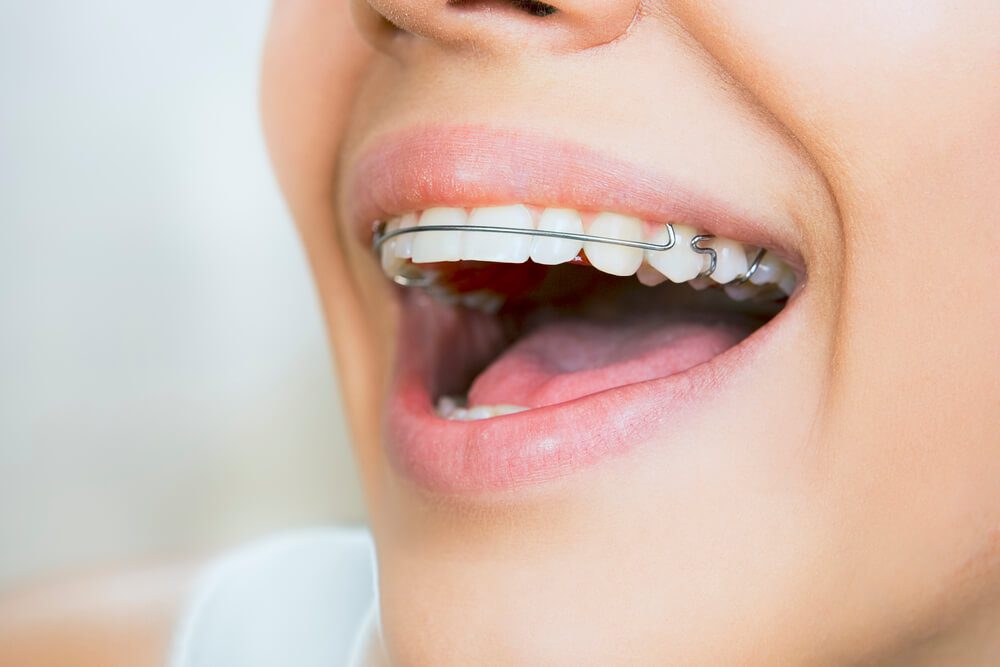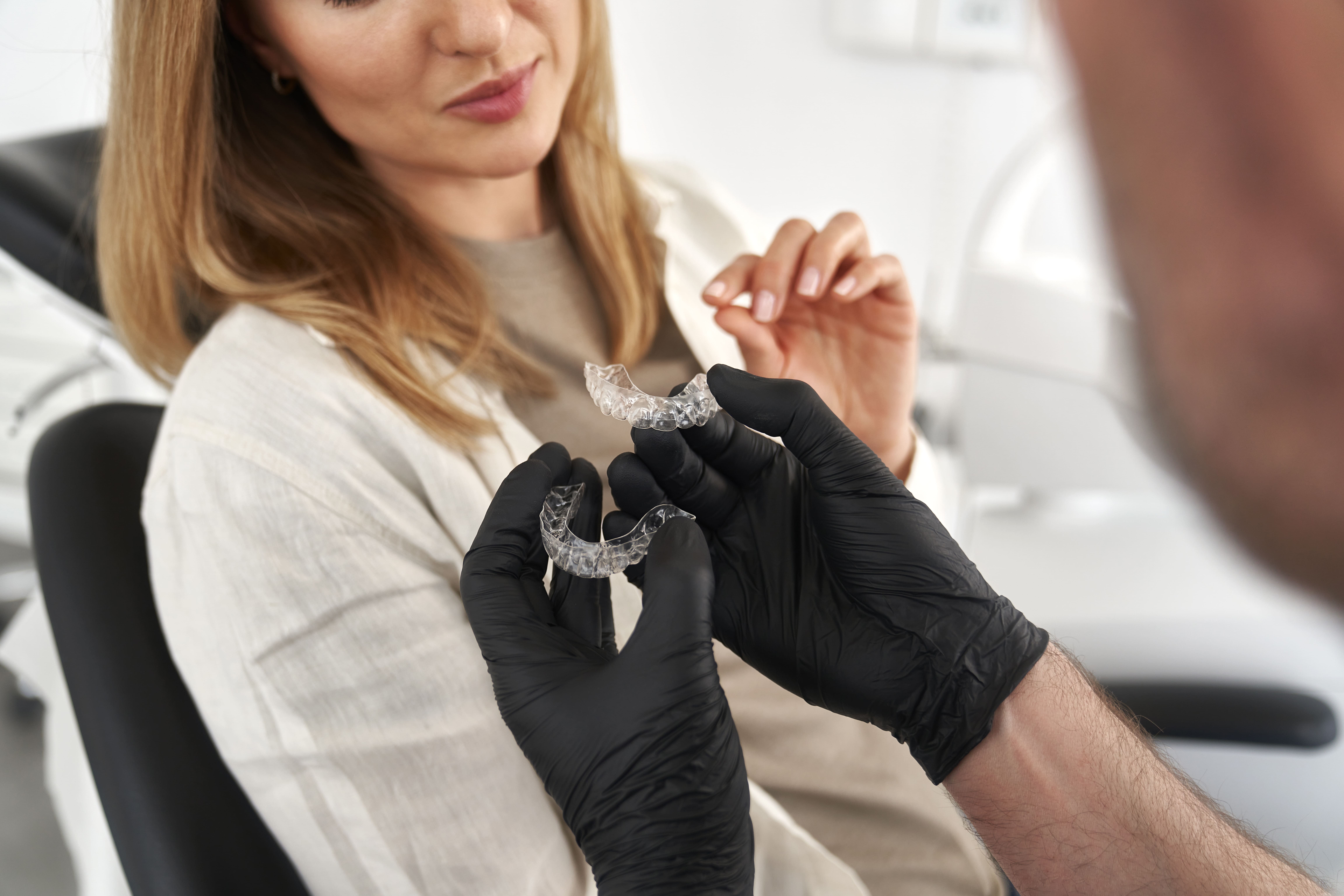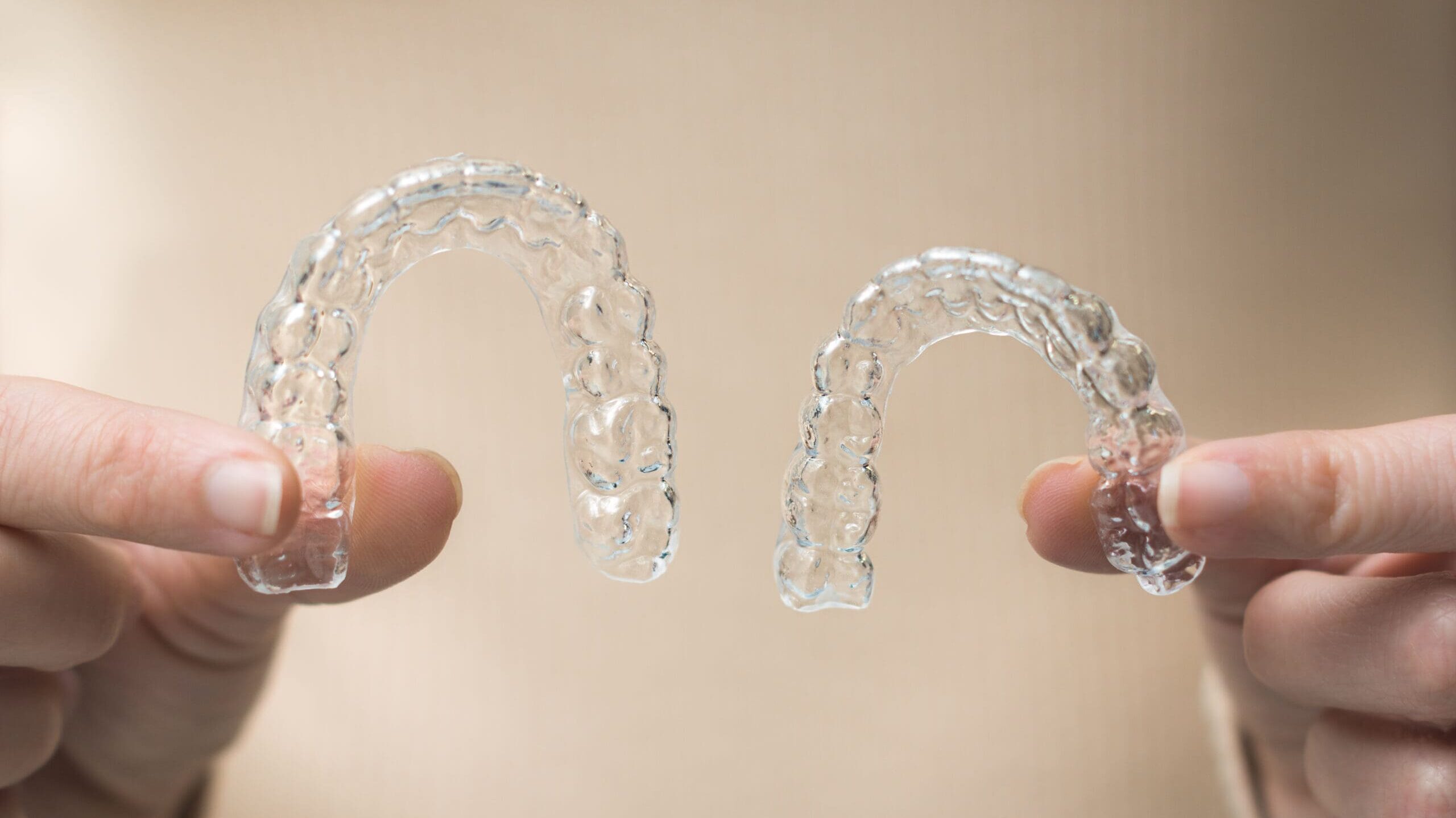
Retainers are an essential part of the orthodontic treatment process, yet they are often overlooked or misunderstood. Whether you are just finishing up treatment with braces or clear aligners or looking into other ways to keep your smile, knowing about retainers is important for keeping your teeth in place and making sure that the effects of your treatment last.
We’ll cover everything you need to know about retainers—from their purpose and types to care tips and common questions—so you can confidently protect your beautiful, straight smile.
If you have questions about retainers or want to discuss your options, contact Smilebliss today to schedule a consultation.
A retainer is a custom-made orthodontic device designed to hold your teeth in their corrected position after active treatment. It prevents unwanted tooth movement that could occur naturally over time due to forces like chewing, tongue pressure, and jaw growth.
Without wearing a retainer as prescribed, even well-aligned teeth can shift, potentially undoing months or years of orthodontic work.
 In orthodontics, retainers are very important. Once your orthodontic appliances (such as braces or clear aligners) are removed, your teeth need time to stabilize in their new positions. The surrounding bone and soft tissues require several months or even years to adapt to the new alignment.
In orthodontics, retainers are very important. Once your orthodontic appliances (such as braces or clear aligners) are removed, your teeth need time to stabilize in their new positions. The surrounding bone and soft tissues require several months or even years to adapt to the new alignment.
Reasons retainers matter include:
There is one main type of retainer that Smilebliss Orthodontics recommends and uses: a clear plastic retainer.
Made from a clear, thin plastic material similar to clear aligners, these retainers fit snugly over your teeth and are virtually invisible.
The duration and frequency of retainer wear vary based on individual treatment and orthodontist recommendations.
However, some general guidelines include:
Consistent use is critical—skipping wear can lead to relapse and shifting teeth.
Proper retainer care prolongs its lifespan and keeps your mouth healthy.

Maintaining good oral hygiene is important when wearing a retainer. Food and plaque can accumulate on the device, increasing the risk of gum disease and dental decay.
Retainers aren’t just a final step—they are a lifelong commitment to preserving your investment in your smile. Teeth naturally shift with age, and retainers help counteract these forces to maintain optimal dental alignment and function.
In the evolving orthodontic landscape, innovations continue to improve retainer materials and designs, making them more comfortable, durable, and effective.
Retainers are an important part of any orthodontic treatment plan. If you know how to wear them and how to take care of them, you will be able to keep your smile even after your braces or aligners are taken off.
If you have questions about retainer treatment or how to care for yours, consult your orthodontic provider. At Smilebliss, we’re here to help you maintain your retainer wear and oral health so your straight smile stays confident and lasting.
Contact us today to book a consultation and learn more about the lasting benefits of retainer treatment.
Can I Eat with My Retainer In?
Generally, retainers should be removed while eating to avoid damage and food trapping.
What Happens If I Lose My Retainer?
Contact your orthodontic office promptly to arrange a replacement to avoid unwanted tooth movement.
Are Retainers Painful?
Some mild discomfort or tightness is normal initially, especially if you haven’t worn it for a while.
Can Retainers Fix Teeth That Have Shifted?
Minor shifting can sometimes be corrected with retainer adjustments, but significant movement may require further orthodontic treatment.